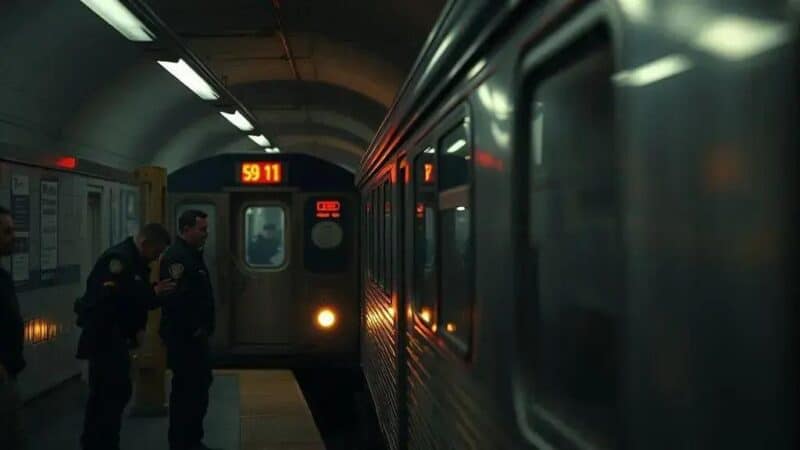Subway surfing has become a heartbreaking danger for many NYC youths, with several recent deaths prompting urgent questions: why can kids still climb train roofs, and what practical steps can stop this trend? Read on to see the facts, the responses and the hard choices ahead.
The surge in subway surfing deaths: recent cases and statistics
Subway surfing is a very dangerous trend. It has caused a sad rise in deaths among young people in New York City. In 2023 alone, five teenagers died while riding on top of subway trains. This number is much higher than in previous years. From 2018 to 2022, there were five deaths in total. This shows a big jump in how often these tragedies happen. Since 2022, nine young lives have been lost because of subway surfing. These numbers are alarming. They highlight the serious risks involved when someone tries to ride outside a moving train. Families and communities are deeply affected by these preventable deaths. The city is trying to find ways to stop this dangerous activity.
How riders access train roofs and the main dangers involved
It’s easy to wonder how young people get onto the roofs of subway trains. Often, they climb up from the station platform when a train is stopped. They might also squeeze between cars to reach the top. This act, known as subway surfing, is extremely risky. Once on the roof, many dangers await them. The train moves very fast. This creates strong winds that can knock someone off balance. There’s a constant risk of falling onto the tracks below. A fall can be deadly.
Another big danger is hitting objects. Subway tunnels have low ceilings and support beams. Bridges also have structures overhead. Riders can hit these things at high speed. This causes serious injury or even death. Electrocution is also a threat. It’s not common on the roof itself. But falling onto the tracks near the third rail is a huge risk. That rail carries high voltage. Sudden stops can throw riders off the train. The thrill might seem exciting. However, the dangers are very real and often fatal.
MTA and NYPD responses: campaigns, drones and limited engineering trials
The MTA and NYPD are working hard to stop subway surfing. They’ve launched many campaigns to warn young people. These campaigns use social media and posters to show the dangers. They want teens to understand that riding on trains is deadly. The NYPD also steps up patrols in stations. They look for anyone trying to get onto train roofs. Their goal is to prevent these dangerous acts before they happen.
New technology is also being used. The MTA has started using drones to watch subway lines. These drones can spot people on top of trains. This helps authorities respond faster. They can stop trains and remove riders. But this is a big system, and it’s hard to watch every spot. The MTA has also looked into engineering fixes. They’ve tried some small changes to train designs. These trials aim to make it harder to climb onto the roofs. However, these changes are often costly. They can also be difficult to put on all trains. So, while efforts are ongoing, finding a perfect solution is still a challenge.
Possible engineering and tech solutions — costs, trade-offs and examples abroad
Stopping subway surfing needs smart ideas. Engineers are looking at ways to make trains harder to climb. They could design train roofs with slopes or smooth surfaces. This would give no handholds. Some ideas include adding barriers or special coatings. These would make it tough to get a grip. But changing all existing trains is a huge job. It costs a lot of money. It also takes a long time to do.
Technology can help too. Imagine sensors on train roofs. These could tell staff if someone climbs up. Cameras with smart software could also spot people. They would send alerts right away. This helps stop the train quickly. However, setting up these systems is expensive. It also needs constant upkeep. There are trade-offs to consider. Is the cost worth the benefit? Will it slow down service?
Other cities face similar issues. Some transit systems abroad use different train designs. Their trains might have higher walls or fewer easy climbing spots. For example, some European metros have very sleek, enclosed designs. These make rooftop access nearly impossible. Learning from these examples can guide New York City. But each system is unique. What works elsewhere might not fit NYC’s old subway lines perfectly. Finding the right balance of safety, cost, and practicality is key.
Families, schools and communities pushing for accountability and prevention
When young lives are lost to subway surfing, families feel deep pain. They are stepping up to demand change. These grieving parents want to know why this keeps happening. They are asking the MTA and city leaders to do more. They want better safety measures. They also want more accountability from those in charge of the subway system. Their voices are powerful. They are pushing for real solutions to protect other kids.
Schools also play a key part. Educators can talk to students about the extreme dangers of riding on trains. They can share stories of what happens. This helps young people understand the risks. Schools can also offer support and safe activities. This gives kids better choices than dangerous stunts. Communities are joining in too. Local groups can create safe places for teens to hang out. They can organize fun events. This keeps kids busy and away from risky behaviors. Everyone working together can make a difference. It’s about protecting our youth and preventing more tragedies.
Fonte: Fortune.com







